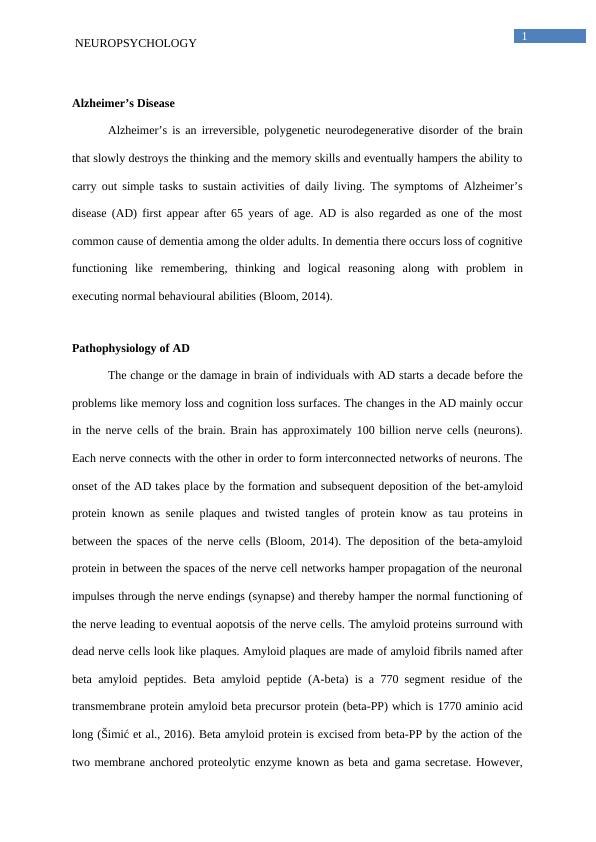How does long term memory and short term memory differ in people with Alzheimer?
8 Pages2228 Words45 Views
Added on 2023-02-01
About This Document
This article discusses the differences between long term memory and short term memory in individuals with Alzheimer's disease. It explores the impact of Alzheimer's on memory retention and highlights relevant research studies.
How does long term memory and short term memory differ in people with Alzheimer?
Added on 2023-02-01
ShareRelated Documents
End of preview
Want to access all the pages? Upload your documents or become a member.
Study on Alzheimer’s Disease
|10
|3369
|272
NUR104 Assessment Task 3: Case Study Analysis
|7
|3269
|273
Herpes Simplex Virus: Research
|5
|1590
|202
Alzheimer’s Disease | Presentation
|1
|1591
|29
Pathophysiology associated with disorder symptoms: An Alzheimer's patient
|7
|1650
|281
Alzheimer Disease: Clinical Update
|13
|3277
|403



